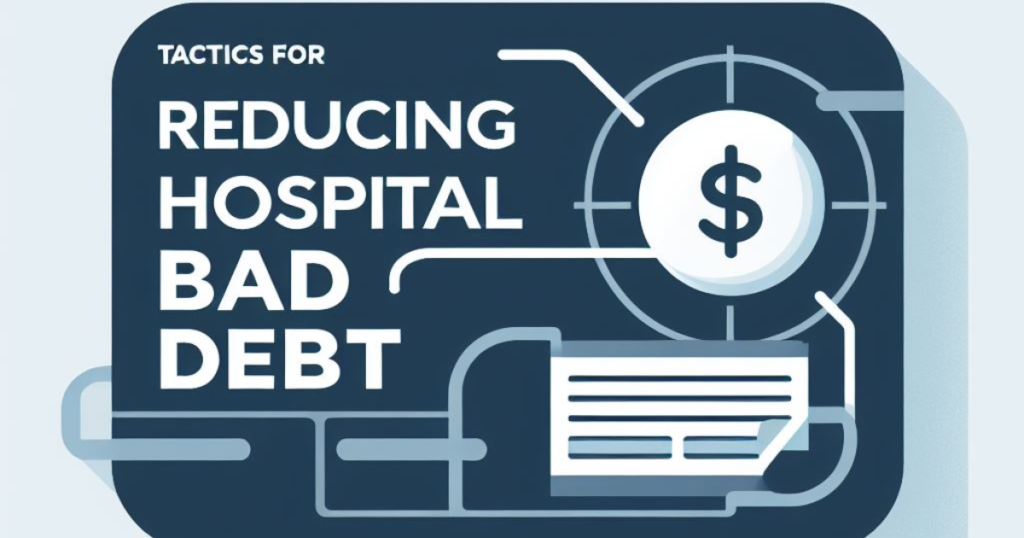Introduction to Revenue Cycle Management in Healthcare:
Revenue Cycle Management (RCM) is a vital process in healthcare that oversees the financial aspects of patient care, from registration to payment collection. It involves managing the flow of revenue throughout the healthcare organization, ensuring efficient billing and reimbursement processes. With accurate and timely management, RCM significantly impacts the financial health of healthcare organizations, helping them maintain stability and provide quality care to their patients.
Patient Registration and Scheduling:
The initial step in the revenue cycle is patient registration and appointment scheduling. This stage involves collecting accurate demographic and insurance information from patients. Ensuring the correct data is collected is essential to avoid billing errors and claim denials. Accurate records are necessary for successful reimbursement and to provide patients with an optimal healthcare experience.
- Accurate demographic information collection includes details such as name, address, contact information, and personal identification data.
- Comprehensive insurance information gathering involves obtaining policy numbers, coverage details, and verifying the patient’s eligibility.
Insurance Verification and Eligibility Checks:
Verifying patient insurance coverage and eligibility is a crucial aspect of revenue cycle management. This process ensures that the services provided by healthcare organizations are covered by the patient’s insurance plan, minimizing the risk of claim denials.
- Insurance verification involves confirming the patient’s insurance information with the insurance company to ensure it is valid and up to date.
- Eligibility checks determine if the patient is eligible for the specific service or treatment they are seeking.
It is essential to verify insurance information before providing services to avoid unnecessary financial burden on patients and prevent the healthcare organization from potential losses.
Pre-authorization and Pre-certification:
Certain medical procedures or treatments may require pre-authorization or pre-certification from the insurance company before they can be performed. This step ensures that the services provided will be reimbursed by insurance and helps avoid claim denials.
- Pre-authorization involves obtaining approval from the insurance company for a specific medical procedure or treatment before it takes place.
- Pre-certification is a similar process that confirms medical necessity and verifies coverage before performing the procedure.
By obtaining pre-authorization or pre-certification, healthcare organizations can avoid financial setbacks and provide necessary care to their patients without unexpected reimbursement issues.
Point of Care Services:
At the point of care, healthcare providers deliver a range of services to patients, including examinations, treatments, and procedures. This phase is critical in the revenue cycle, as accurate coding and documentation of services provided are vital for successful billing and reimbursement.
- Accurate coding entails assigning specific codes to diagnoses and procedures performed during the visit. These codes help communicate the healthcare services provided to insurance companies.
- Documentation of services ensures that the medical record accurately reflects the patient’s care, aiding in claim submission and reimbursement.
Thorough and precise coding and documentation improve the accuracy of claims and expedite the reimbursement process, benefiting both the healthcare organization and the patient.
Medical Coding and Documentation:
Medical coding is a complex process that involves translating healthcare services, diagnoses, and procedures into alphanumeric codes. Accurate and compliant coding is essential for successful claims and plays a significant role in the revenue cycle.
- Specific codes are assigned using standard code sets such as International Classification of Diseases (ICD-10) for diagnoses and Current Procedural Terminology (CPT) codes for procedures.
- Compliance with coding guidelines and regulations helps ensure accurate reimbursement and reduce the risk of audits or penalties.
Healthcare organizations must prioritize accurate medical coding and documentation to maximize revenue and minimize billing errors or potential legal consequences.
Claims Submission:
Once the services and procedures have been coded and documented accurately, the next step in the revenue cycle is submitting claims to insurance companies or payers. Efficient and timely claims submission is crucial for prompt reimbursement.
- Electronic claims submission has significantly improved the efficiency of this process. It allows healthcare organizations to submit claims electronically, reducing paperwork, and expediting reimbursement.
- Electronic claims submission ensures that claims are delivered securely, minimizing the risk of lost or delayed paperwork.
Healthcare organizations should leverage electronic claims submission to streamline their revenue cycle, accelerate cash flow, and enhance overall operational efficiency.
Claims Follow-Up and Denial Management:
Proactive follow-up on submitted claims is essential in revenue cycle management. Healthcare organizations need to monitor the status of claims, identify any rejections or denials, and take appropriate action.
- Denial management plays a crucial role in identifying and addressing claim rejections effectively. By thoroughly investigating and addressing denials, healthcare organizations can ensure maximum reimbursement.
- Timely follow-up and appropriate appeals are necessary to rectify claim denials and minimize potential revenue loss.
Efficient claims follow-up and denial management enable healthcare organizations to maintain a healthy revenue stream and address any obstacles promptly.
Patient Billing and Collections:
Patient billing is generated based on the services provided and their insurance coverage. Accurate and transparent billing practices are crucial to maintaining patient satisfaction and ensuring timely payment.
- Strategies such as providing detailed itemized billing statements and clear explanations of charges help patients understand their financial responsibilities.
- Offering flexible payment plans and financial counseling support patients in managing their medical expenses and improving overall collections.
Transparent and patient-centric billing practices enhance the financial stability of healthcare organizations while prioritizing patient satisfaction.
Payment Posting and Reconciliation:
Recording and reconciling payments received from insurance companies and patients is a critical aspect of revenue cycle management. Accurate financial tracking ensures that payments are accurately applied, reducing discrepancies and maintaining financial stability.
- Payment posting involves recording the payment details received from insurance companies or patients, such as payment amounts, check numbers, or electronic transaction information.
- Reconciliation ensures that the amounts posted match the expected reimbursement, allowing for the identification and resolution of any discrepancies.
Accurate payment posting and reconciliation streamline the revenue cycle, enabling healthcare organizations to maintain financial transparency and efficiency.
Compliance and Regulatory Considerations:
Revenue cycle management in healthcare is subject to various regulations and compliance standards that aim to safeguard patient information and ensure ethical practices. Non-compliance with these regulations can result in severe consequences for healthcare organizations.
- The Health Insurance Portability and Accountability Act (HIPAA) ensures the confidentiality and security of patient health information.
- International Classification of Diseases, Tenth Revision (ICD-10) and Current Procedural Terminology (CPT codes) are standard code sets that must be followed for accurate reimbursement and claims processing.
Adherence to these regulations and standards is crucial for protecting patient privacy, avoiding legal complications, and maintaining ethical revenue cycle practices.
RCM Software and Technology:
Technology plays a pivotal role in streamlining the revenue cycle. The role of technology is instrumental in optimizing the revenue cycle. Revenue cycle management software and electronic health records (EHRs) offer numerous benefits, enhancing efficiency and accuracy in healthcare organizations.
- RCM software automates various tasks, including claims submission, denial management, and payment posting, reducing manual errors and improving overall productivity.
- Electronic health records centralize patient information, allowing for seamless access and updating, streamlining the revenue cycle process.
Integration of technology optimizes revenue cycle management, leading to improved financial outcomes and patient care delivery.
Key Performance Indicators (KPIs) in RCM:
Healthcare organizations track several key performance indicators (KPIs) to assess the effectiveness of their revenue cycle management processes. These metrics provide insights into operational performance and financial health.
- Days in accounts receivable (DAR) measures the average time taken to collect payments from insurance or patients.
- Clean claims rate indicates the percentage of claims submitted without errors or rejections.
- Denial rate measures the frequency of claim denials and rejections.
By regularly monitoring these KPIs, healthcare organizations can identify areas for improvement, optimize revenue generation, and enhance the financial stability of the organization.
Continuous Improvement and Training:
Ongoing training for staff involved in revenue cycle management is vital for success. Continuous improvement ensures that healthcare organizations adapt to evolving regulations and industry best practices, promoting efficiency and compliance.
- Regular training sessions keep staff updated on changing coding guidelines, regulatory requirements, and software updates.
- Continuous improvement initiatives focus on streamlining processes, optimizing workflow, and addressing any identified gaps or issues.
By fostering a culture of continuous improvement and investing in staff training, healthcare organizations can achieve operational excellence, maximize revenue, and provide exceptional patient care.
Conclusion:
Revenue cycle management (RCM) plays a critical role in the financial stability of healthcare organizations. From patient registration to payment collection, each step in the revenue cycle requires precision and accuracy. By prioritizing accurate coding, timely claims submission, and proactive follow-up, healthcare organizations can optimize revenue generation and ensure the financial viability necessary to provide high-quality care to their patients. Continuous improvement efforts, compliance with regulations, and leveraging technology further streamline the revenue cycle. Emphasizing the importance of revenue cycle management is key to fostering financial stability and maintaining the long-term success of healthcare organizations. If you’re interested in enhancing your RCM processes, our RCM solutions are designed to help you achieve your financial goals.





